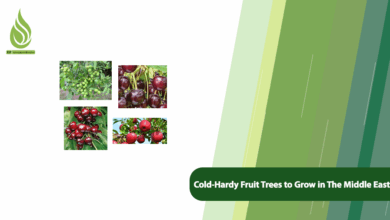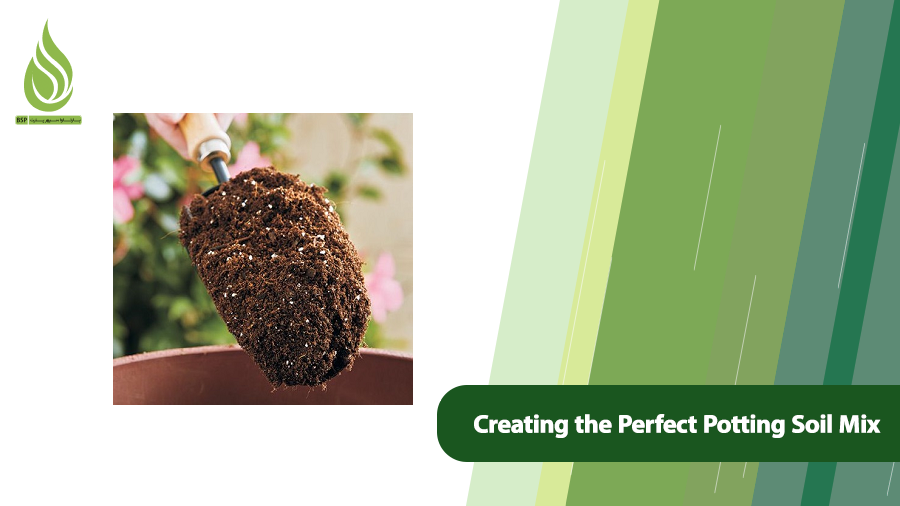
Creating the Perfect Potting Soil Mix
If you keep houseplants in your home or apartment, understanding the essentials of container gardening is key. One of the most critical factors in successfully growing plants is selecting the right soil. Potting soil isn’t just a foundation for anchoring roots—it also plays a vital role in delivering essential nutrients. In this guide, we’ll break down the ideal potting soil composition and the optimal ratios for a thriving mix. Let’s dive in!
What Makes Potting Soil Effective?
Plants grown indoors in containers require specific care. Many are sensitive and not suited for outdoor gardens or open spaces. If you’re new to container gardening, creating the right environment is crucial for healthy growth. A major priority is using proper soil, as potting mix differs significantly from garden soil. Simply transferring outdoor garden soil into pots can actually hinder plant growth due to poor drainage and compaction. To create the best potting soil, regular soil must be amended with other materials.
Why the Right Mix Matters
The ideal potting soil blend is essential for plant health and development. Quality soil enhances drainage, retains moisture, ensures proper aeration, and supplies nutrients. By balancing these elements, you’ll create an environment where roots can thrive, leading to lush, vibrant plants.
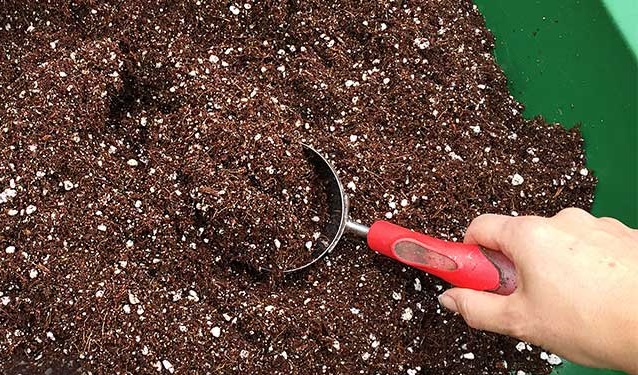
Essential Components of Potting Soil
The ideal potting soil mix for container plants includes the following key ingredients:
- Garden Soil
Garden soil serves as the base for creating potting mix. Use nutrient-rich soil from your garden or a trusted source as the foundation. - Perlite
Perlite is a lightweight, porous, white mineral made by heating volcanic glass. It improves drainage, prevents soil compaction, and enhances aeration. While it doesn’t provide nutrients, perlite can retain moisture and slowly release it back into the soil. It functions similarly to vermiculite, and either can be used in a potting mix. - Vermiculite
Vermiculite is a heat-expanded mineral with excellent water-holding capacity. It helps retain moisture and improves soil structure. Though similar to perlite, vermiculite holds significantly more water, making it ideal for moisture-loving plants. - Coco Coir
Made from coconut husks, coco coir is an organic, eco-friendly alternative to peat moss. It boosts root growth, retains moisture, and improves soil aeration. Sold in compressed bricks, it expands when soaked in water. If unavailable, peat moss can be substituted. - Peat Moss
Peat moss consists of decomposed sphagnum moss, leaves, and organic matter. Its dark color and coarse texture promote drainage and root oxygenation. While commercially available, it can also be harvested from forest floors by removing the top layer of soil and leaves to access the soft, black peat beneath. - Pumice
Pumice is a lightweight, porous volcanic rock often placed at the bottom of pots to enhance drainage. It prevents waterlogging and protects roots from rot.
Optional Additives for Enhanced Soil Quality
- Sand: Improves drainage and soil permeability.
- Leaf Mold: Enriches soil with organic matter.
- Organic/Chemical Fertilizers: Provide essential nutrients for plant growth.
- Compost or Vermicompost: Enhances soil’s physical, chemical, and biological properties.
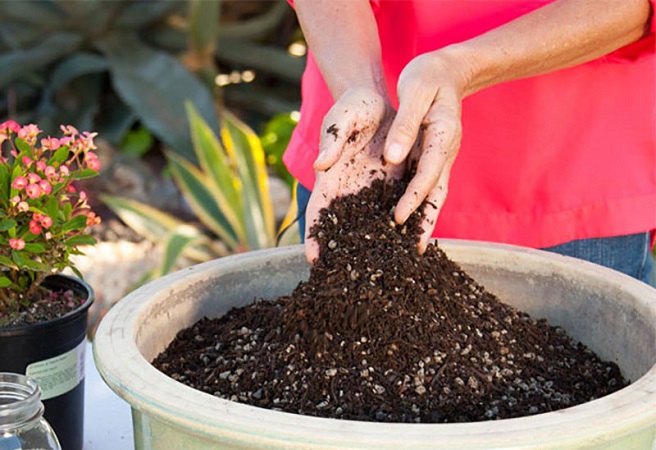
What’s the Best Potting Soil Mix?
The ideal potting soil blend depends on your plant type. Houseplants and container plants are generally divided into two categories: succulents and non-succulents. For example, cacti and succulents require a different soil mix compared to other houseplants. Below, we break down the optimal blends for each category.
Custom Mixes for Different Plants
- Ornamental Plants
- Mix: 40% garden soil, 30% perlite, 30% compost.
- Benefits: Supports nutrient delivery and improves drainage.
- Cacti & Succulents
- Mix: 50% coarse sand, 30% perlite, 20% garden soil.
- Benefits: Ensures excellent drainage and prevents waterlogging.
- Plants with Moderate Moisture Needs
- Mix: 50% garden soil, 25% perlite, 25% coco coir.
- Benefits: Balances moisture retention and aeration.
- Houseplants
- Mix: 40% garden soil, 40% coco coir, 20% perlite.
- Benefits: Enhances soil structure and retains moisture.
- Shade-Loving Plants
- Mix: 50% garden soil, 30% vermiculite, 20% compost.
- Benefits: Maintains humidity and airflow for low-light environments.
- Vegetables & Edible Plants
- Mix: 50% garden soil, 30% composted manure, 20% perlite.
- Benefits: Fuels robust growth for herbs and veggies in containers.
By tailoring your potting mix to your plant’s needs, you’ll create the perfect environment for healthy, thriving growth. Adjust ratios based on your plant’s specific requirements, and watch your greenery flourish!
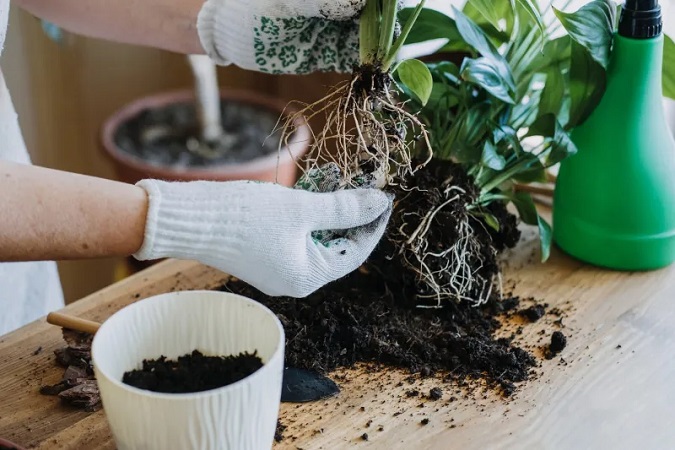
How to Make Your Own Potting Soil
Now that we’ve covered the ideal components and ratios for potting soil, let’s walk through the step-by-step process of mixing and testing your custom blend.
Step 1: Gather Your Ingredients
Collect all necessary materials:
- Garden soil
- Perlite
- Coco coir
- Sand (if needed)
- Compost or organic matter
Step 2: Measure the Ratios
Use a measuring cup or container to portion ingredients based on your plant’s needs. For example:
- Ornamental plants: 40% garden soil, 30% perlite, 30% compost.
- Cacti/succulents: 50% sand, 30% perlite, 20% garden soil.
Step 3: Mix Thoroughly
- Combine ingredients in a large bucket, plastic tub, or sturdy bag.
- Use a trowel, shovel, or gloves to blend until fully integrated. Break up clumps and ensure even distribution.
Step 4: Fill Your Pots
Transfer the mixed soil to your pots, leaving space below the rim for watering. Store leftovers in an airtight container or sealed bag in a cool, dry place.
Testing Your Soil’s Quality
To ensure your mix is ready:
- Moisten a handful of soil and squeeze it into a ball.
- Hold for 3 seconds, then open your hand.
- If the soil holds its shape: It’s too dense (high clay content). Add perlite, sand, or coco coir to improve drainage.
- If the soil crumbles: Perfect! It’s well-aerated and ready for use.
By following these steps, you’ll create a tailored potting mix that supports healthy root growth and prevents issues like waterlogging. Adjust ratios as needed, and always test your soil before planting!
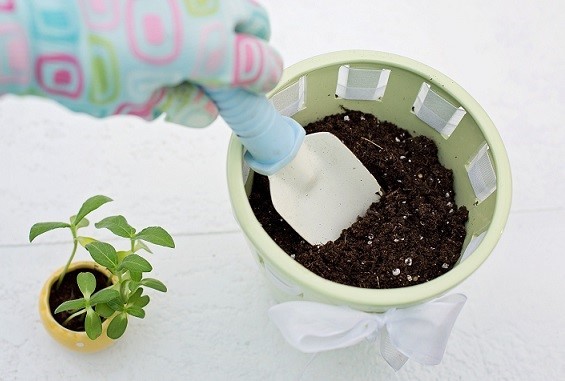
Key Tips for Preparing Potting Soil
- Use Fresh, Sterile Soil
- Always start with uncontaminated, pest-free soil. Avoid reusing old soil from diseased plants, as it may harbor harmful fungi or insects.
- Test Drainage Before Use
- Balance Moisture Retention
- For plants that need consistent moisture (e.g., ferns, tropical plants), add coco coir or vermiculite to retain water without suffocating roots.
- Use Pre-Made Potting Mixes for Specific Plants
- Commercial mixes (e.g., for succulents, orchids, or vegetables) are pre-balanced for specific needs. Buy from reputable nurseries and check labels for ingredients like peat moss, perlite, or fertilizers.
- Adjust Soil Ratios Periodically
- Monitor your plant’s health. If leaves yellow or growth stalls, tweak the mix: add compost for nutrients, sand for drainage, or coco coir for moisture retention.
- Replace Soil Every 1–2 Years
- Over time, soil compacts and loses nutrients. Refreshing it ensures proper aeration and nutrient availability.
- Adjust Care Seasonally
- In fall/winter, reduce watering and moisture-retaining additives (like vermiculite) as plants enter dormancy. Increase drainage to avoid soggy soil. We suggest you take a look at our guide to fall plant care.
- Optimize Drainage in Pots
- Always use pots with drainage holes. Add a 1–2 inch layer of pumice at the bottom to prevent waterlogging while maintaining ideal moisture levels.
- Use the Right Type of Sand
- River sand is ideal for improving drainage. If unavailable, rinse construction sand thoroughly to remove salts and reduce stickiness.
- Sterilize Garden Soil to Kill Pests/Fungi
- Spread soil in a heat-safe container and bake at 180°F (82°C) for 30 minutes. Let it cool before use.
